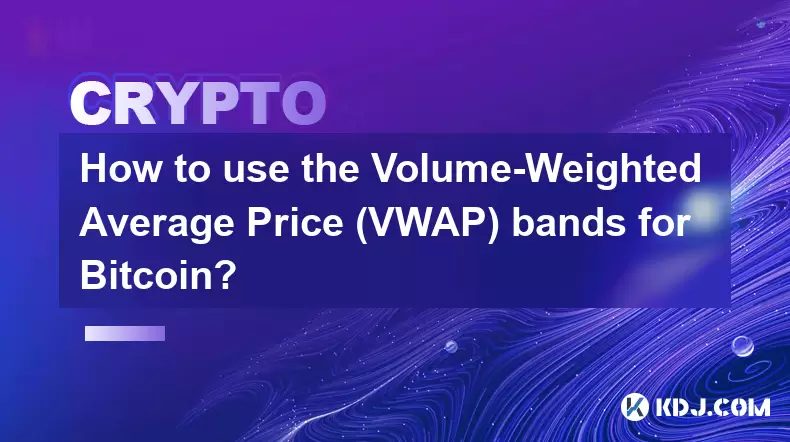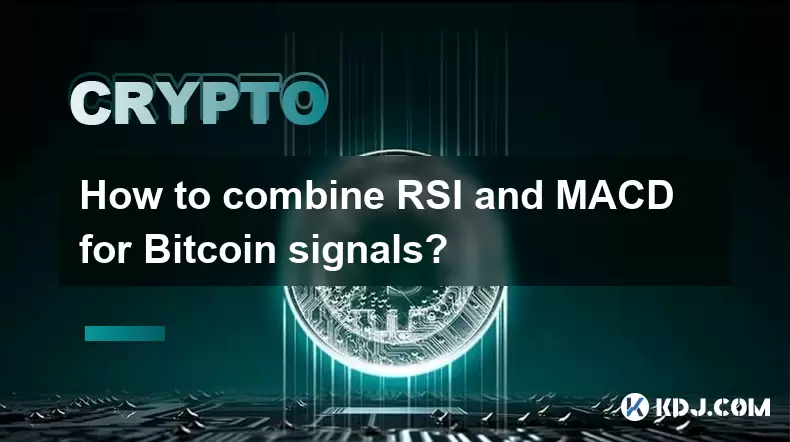-
 Bitcoin
Bitcoin $108,192.4840
-0.79% -
 Ethereum
Ethereum $2,520.0996
-1.16% -
 Tether USDt
Tether USDt $1.0002
-0.01% -
 XRP
XRP $2.2216
-0.44% -
 BNB
BNB $655.3498
-0.46% -
 Solana
Solana $148.0291
-1.58% -
 USDC
USDC $0.9999
0.00% -
 TRON
TRON $0.2831
-1.37% -
 Dogecoin
Dogecoin $0.1642
-1.68% -
 Cardano
Cardano $0.5748
-1.24% -
 Hyperliquid
Hyperliquid $39.4087
1.28% -
 Sui
Sui $2.9157
-0.36% -
 Bitcoin Cash
Bitcoin Cash $483.5621
0.38% -
 Chainlink
Chainlink $13.2143
-1.13% -
 UNUS SED LEO
UNUS SED LEO $9.0623
0.20% -
 Avalanche
Avalanche $17.8302
-1.40% -
 Stellar
Stellar $0.2374
-1.09% -
 Toncoin
Toncoin $2.7496
-2.20% -
 Shiba Inu
Shiba Inu $0.0...01147
-0.83% -
 Hedera
Hedera $0.1557
0.09% -
 Litecoin
Litecoin $86.3775
-1.75% -
 Monero
Monero $312.5454
-2.83% -
 Polkadot
Polkadot $3.3663
-2.25% -
 Dai
Dai $1.0000
0.01% -
 Ethena USDe
Ethena USDe $1.0001
0.00% -
 Bitget Token
Bitget Token $4.4127
-1.15% -
 Uniswap
Uniswap $6.9598
-5.53% -
 Pepe
Pepe $0.0...09815
0.25% -
 Aave
Aave $270.5779
0.33% -
 Pi
Pi $0.4678
-3.14%
Is Bitcoin OTC trading safe? What issues need to be paid attention to?
Bitcoin OTC trading can be safe with due diligence on the counterparty, strong security measures, and compliance with regulations; choose a reputable broker to mitigate risks.
Apr 29, 2025 at 08:29 am

Is Bitcoin OTC trading safe? What issues need to be paid attention to?
Over-the-counter (OTC) trading of Bitcoin has become a popular method for investors to buy and sell large amounts of cryptocurrency without affecting the market price. However, the safety of OTC trading is a concern for many. In this article, we will explore the safety of Bitcoin OTC trading and highlight the key issues that need to be paid attention to.
What is Bitcoin OTC Trading?
Bitcoin OTC trading refers to the process of trading Bitcoin directly between two parties without using a traditional exchange. This method is often used by institutional investors and high-net-worth individuals who want to trade large volumes of cryptocurrency without impacting the market price. OTC trading can be facilitated through a broker or a specialized OTC desk.
The Safety of Bitcoin OTC Trading
The safety of Bitcoin OTC trading depends on several factors, including the reputation of the broker or OTC desk, the security measures in place, and the due diligence performed by both parties. While OTC trading can be safe, there are certain risks that need to be considered.
Counterparty Risk: One of the main risks associated with OTC trading is the possibility of the counterparty defaulting on the trade. This risk can be mitigated by choosing a reputable broker or OTC desk and conducting thorough due diligence on the counterparty.
Security Risks: OTC trading often involves transferring large amounts of cryptocurrency, which can make it a target for hackers. It is essential to ensure that the broker or OTC desk has robust security measures in place to protect your funds.
Regulatory Risks: The regulatory environment for cryptocurrency can vary significantly from one jurisdiction to another. It is important to understand the regulatory requirements in your jurisdiction and ensure that the broker or OTC desk complies with them.
Key Issues to Pay Attention to in Bitcoin OTC Trading
When engaging in Bitcoin OTC trading, there are several key issues that you need to pay attention to in order to ensure a safe and successful trade.
Reputation of the Broker or OTC Desk: The reputation of the broker or OTC desk is crucial. You should research the broker or OTC desk thoroughly, read reviews from other users, and check if they are registered with any regulatory bodies.
Due Diligence: Conducting due diligence on the counterparty is essential. This includes verifying their identity, checking their financial stability, and ensuring that they have a good track record of completing trades.
Security Measures: Ensure that the broker or OTC desk has strong security measures in place to protect your funds. This includes using cold storage for storing cryptocurrency, implementing multi-signature wallets, and having a robust cybersecurity framework.
Transparency and Communication: Good communication and transparency are key to a successful OTC trade. The broker or OTC desk should provide clear information about the trade, including the price, volume, and any fees involved. They should also keep you updated on the progress of the trade.
Legal and Regulatory Compliance: Ensure that the broker or OTC desk complies with all relevant legal and regulatory requirements. This includes anti-money laundering (AML) and know your customer (KYC) regulations.
How to Conduct a Safe Bitcoin OTC Trade
To conduct a safe Bitcoin OTC trade, follow these steps:
Choose a Reputable Broker or OTC Desk: Research different brokers and OTC desks to find one with a good reputation. Check if they are registered with any regulatory bodies and read reviews from other users.
Conduct Due Diligence: Verify the identity of the counterparty and check their financial stability. You can use services like Chainalysis to perform a background check on the counterparty.
Negotiate the Terms of the Trade: Discuss the terms of the trade with the counterparty, including the price, volume, and any fees involved. Ensure that both parties are in agreement before proceeding with the trade.
Set Up a Secure Escrow: Use a secure escrow service to hold the funds until the trade is completed. This will protect both parties from the risk of default.
Transfer the Cryptocurrency: Once the terms of the trade are agreed upon and the escrow is set up, transfer the cryptocurrency to the escrow service. The counterparty will then transfer the corresponding amount of fiat currency to the escrow service.
Release the Funds: Once both parties have confirmed that the trade is complete, the escrow service will release the funds to the respective parties.
Common Pitfalls to Avoid in Bitcoin OTC Trading
When engaging in Bitcoin OTC trading, there are several common pitfalls that you should avoid:
Failing to Conduct Due Diligence: Failing to conduct thorough due diligence on the counterparty can lead to a high risk of default. Always verify the identity and financial stability of the counterparty before proceeding with the trade.
Using an Unreliable Broker or OTC Desk: Choosing an unreliable broker or OTC desk can put your funds at risk. Always research the broker or OTC desk thoroughly and check their reputation before engaging in a trade.
Neglecting Security Measures: Neglecting to implement strong security measures can make your funds vulnerable to hacking. Always ensure that the broker or OTC desk has robust security measures in place.
Ignoring Regulatory Requirements: Ignoring legal and regulatory requirements can lead to legal issues and potential fines. Always ensure that the broker or OTC desk complies with all relevant regulations.
FAQs
Q: Can I use OTC trading for small amounts of Bitcoin?
A: While OTC trading is typically used for large volumes of cryptocurrency, some brokers and OTC desks may facilitate trades for smaller amounts. However, the fees and minimum trade sizes can vary, so it is important to check with the broker or OTC desk beforehand.
Q: How long does a Bitcoin OTC trade usually take?
A: The duration of a Bitcoin OTC trade can vary depending on the complexity of the trade and the efficiency of the broker or OTC desk. In general, a trade can take anywhere from a few hours to a few days to complete.
Q: Are there any fees associated with Bitcoin OTC trading?
A: Yes, there are usually fees associated with Bitcoin OTC trading. These can include brokerage fees, escrow fees, and any other fees charged by the broker or OTC desk. It is important to understand the fee structure before engaging in a trade.
Q: Can I conduct a Bitcoin OTC trade anonymously?
A: While some brokers and OTC desks may allow for anonymous trading, most require some form of identity verification to comply with AML and KYC regulations. It is important to check the requirements of the broker or OTC desk before proceeding with the trade.
Disclaimer:info@kdj.com
The information provided is not trading advice. kdj.com does not assume any responsibility for any investments made based on the information provided in this article. Cryptocurrencies are highly volatile and it is highly recommended that you invest with caution after thorough research!
If you believe that the content used on this website infringes your copyright, please contact us immediately (info@kdj.com) and we will delete it promptly.
- Bitcoin's Pattern Break: Are HODLers the Key to the Next Surge?
- 2025-07-04 18:50:12
- Bitcoin Price, Trump's Bill, and the $150K Dream: A NYC Take
- 2025-07-04 19:50:12
- Ethereum, LILPEPE, and the July Bounce: Will Pepe Steal ETH's Thunder?
- 2025-07-04 19:10:12
- Binance Institutional Loans: Unlocking 4x Leverage and Zero Interest for Whales
- 2025-07-04 19:15:12
- Bitcoin Bull Run: Analysts Eye Peak in Late 2025?
- 2025-07-04 19:20:13
- Pepe Indicators, Bullish Forecast: Can the Meme Coin Rally?
- 2025-07-04 19:25:12
Related knowledge

What is the Woodies CCI indicator and can it be used for Bitcoin?
Jul 04,2025 at 05:14pm
Understanding the Woodies CCI IndicatorThe Woodies CCI indicator is a variation of the traditional Commodity Channel Index (CCI), which was originally developed by Donald Lambert. The standard CCI measures the current price level relative to an average price over a given period, typically 14. However, the Woodies version modifies this calculation to mak...

What does a bearish cross on the Stochastic RSI mean for Bitcoin?
Jul 05,2025 at 07:18pm
Understanding the Stochastic RSI IndicatorThe Stochastic RSI (Relative Strength Index) is a momentum oscillator used in technical analysis to identify overbought or oversold conditions in an asset's price. It combines two well-known indicators — the RSI and the Stochastic Oscillator — to provide more nuanced signals than either could alone. The Stochast...

How to use the Volume-Weighted Average Price (VWAP) bands for Bitcoin?
Jul 04,2025 at 04:28pm
Understanding the Basics of VWAP BandsThe Volume-Weighted Average Price (VWAP) is a key metric used in trading to determine the average price at which an asset, such as Bitcoin, has traded throughout the day. It takes into account both volume and price, making it more reliable than a simple moving average. VWAP bands are essentially standard deviation c...

How to code a simple MACD crossover strategy for Bitcoin in Pine Script?
Jul 05,2025 at 07:18pm
Understanding the MACD Indicator in Cryptocurrency TradingThe Moving Average Convergence Divergence (MACD) is a popular technical indicator used across various financial markets, including cryptocurrency. It helps traders identify potential trend reversals and momentum shifts by comparing two moving averages. In the context of Bitcoin trading, the MACD ...

How to use indicators to differentiate a Bitcoin pullback from a reversal?
Jul 05,2025 at 07:17pm
Understanding Bitcoin Pullbacks and ReversalsIn the volatile world of Bitcoin trading, distinguishing between a pullback and a reversal is crucial for making informed decisions. A pullback refers to a temporary decline in price within an ongoing uptrend, while a reversal indicates a fundamental shift in market sentiment, potentially leading to a downtre...

How to combine RSI and MACD for Bitcoin signals?
Jul 05,2025 at 07:17pm
Understanding RSI and MACD Indicators in Bitcoin TradingThe Relative Strength Index (RSI) and Moving Average Convergence Divergence (MACD) are two of the most widely used technical indicators in cryptocurrency trading, particularly for analyzing Bitcoin price movements. RSI is a momentum oscillator that measures the speed and change of price movements, ...

What is the Woodies CCI indicator and can it be used for Bitcoin?
Jul 04,2025 at 05:14pm
Understanding the Woodies CCI IndicatorThe Woodies CCI indicator is a variation of the traditional Commodity Channel Index (CCI), which was originally developed by Donald Lambert. The standard CCI measures the current price level relative to an average price over a given period, typically 14. However, the Woodies version modifies this calculation to mak...

What does a bearish cross on the Stochastic RSI mean for Bitcoin?
Jul 05,2025 at 07:18pm
Understanding the Stochastic RSI IndicatorThe Stochastic RSI (Relative Strength Index) is a momentum oscillator used in technical analysis to identify overbought or oversold conditions in an asset's price. It combines two well-known indicators — the RSI and the Stochastic Oscillator — to provide more nuanced signals than either could alone. The Stochast...

How to use the Volume-Weighted Average Price (VWAP) bands for Bitcoin?
Jul 04,2025 at 04:28pm
Understanding the Basics of VWAP BandsThe Volume-Weighted Average Price (VWAP) is a key metric used in trading to determine the average price at which an asset, such as Bitcoin, has traded throughout the day. It takes into account both volume and price, making it more reliable than a simple moving average. VWAP bands are essentially standard deviation c...

How to code a simple MACD crossover strategy for Bitcoin in Pine Script?
Jul 05,2025 at 07:18pm
Understanding the MACD Indicator in Cryptocurrency TradingThe Moving Average Convergence Divergence (MACD) is a popular technical indicator used across various financial markets, including cryptocurrency. It helps traders identify potential trend reversals and momentum shifts by comparing two moving averages. In the context of Bitcoin trading, the MACD ...

How to use indicators to differentiate a Bitcoin pullback from a reversal?
Jul 05,2025 at 07:17pm
Understanding Bitcoin Pullbacks and ReversalsIn the volatile world of Bitcoin trading, distinguishing between a pullback and a reversal is crucial for making informed decisions. A pullback refers to a temporary decline in price within an ongoing uptrend, while a reversal indicates a fundamental shift in market sentiment, potentially leading to a downtre...

How to combine RSI and MACD for Bitcoin signals?
Jul 05,2025 at 07:17pm
Understanding RSI and MACD Indicators in Bitcoin TradingThe Relative Strength Index (RSI) and Moving Average Convergence Divergence (MACD) are two of the most widely used technical indicators in cryptocurrency trading, particularly for analyzing Bitcoin price movements. RSI is a momentum oscillator that measures the speed and change of price movements, ...
See all articles

























































































